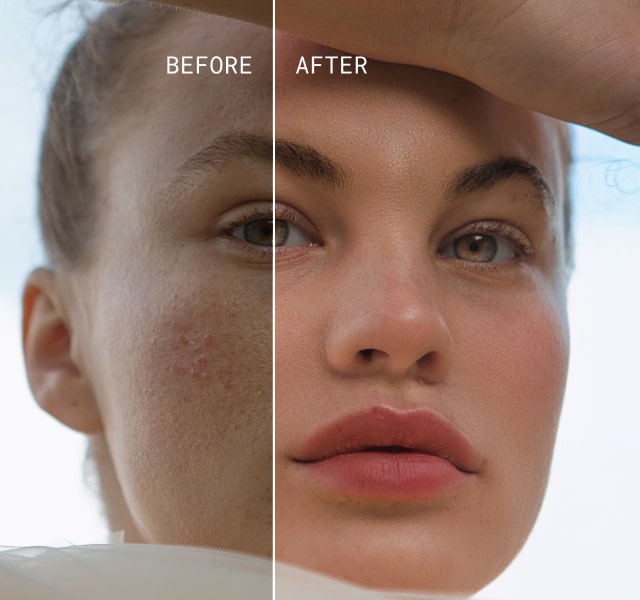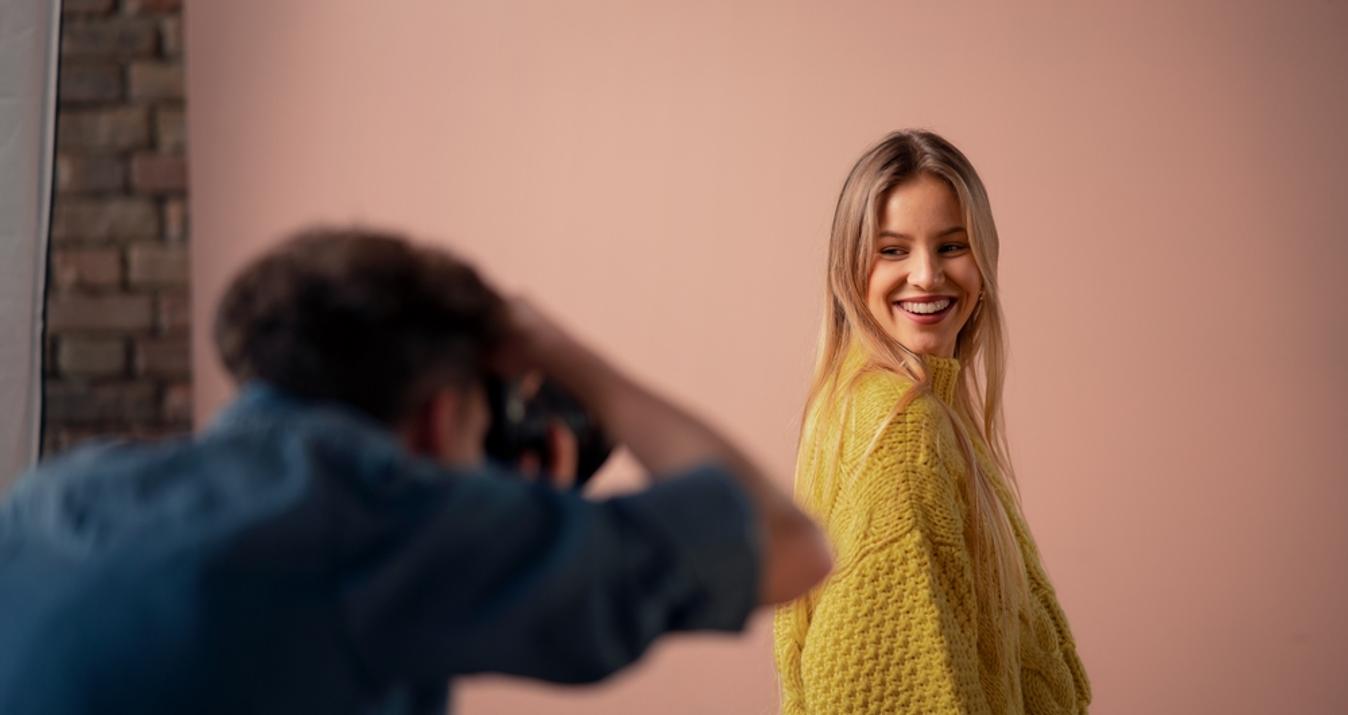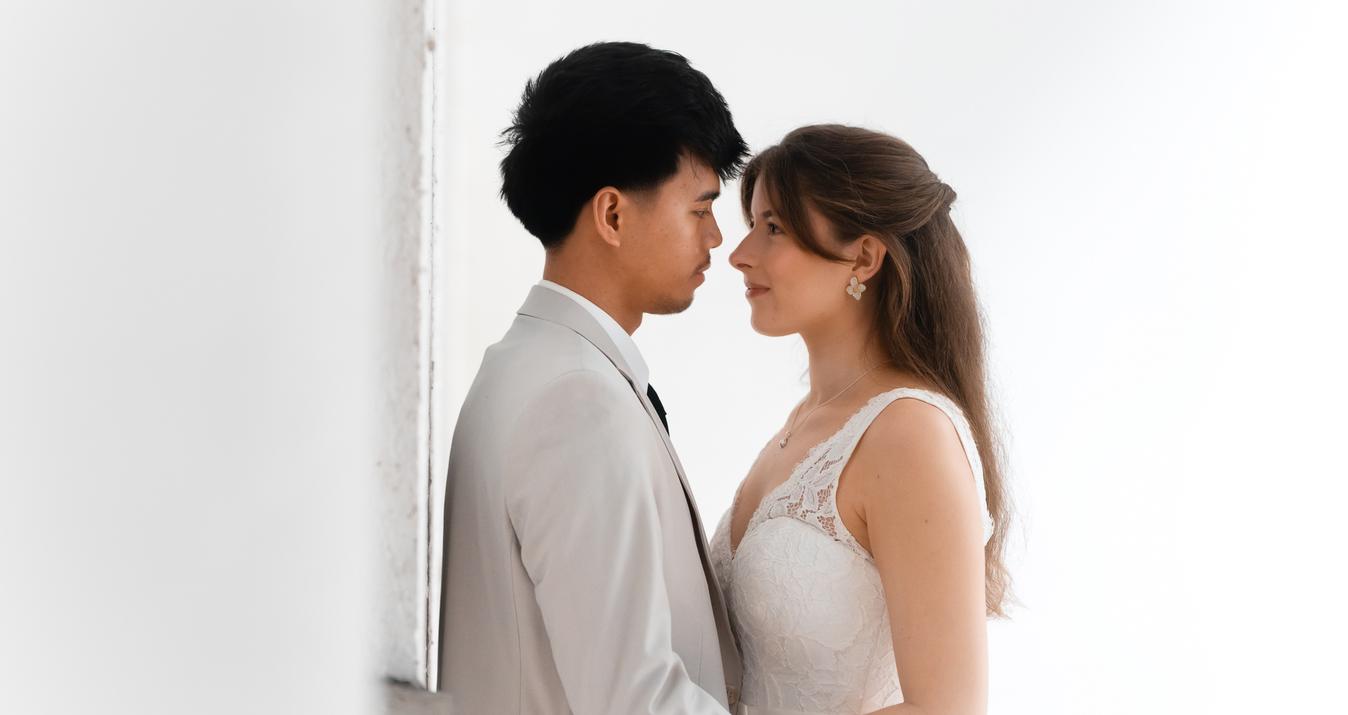Headshot Photography Tips For Your Technique
November 11, 2025

A great headshot can open doors, but achieving one takes skill. Follow these headshot photography tips to make every shot count.
A strong headshot opens doors. It tells a story about the person in one frame. This headshot guide gives clear, practical steps you can use on set today. You will get technical choices, lighting actions, posing moves, and editing rules. Read these and practice them in short, repeated sessions. After a few tries, you will notice small but meaningful improvements. Whether you’re shooting for actors, professionals, or social media, these tips help create images that feel authentic and genuine. By paying attention to details, even subtle changes can make your headshots stand out.
Understanding Headshot Photography Basics
 Good headshots are simple by design. The goal is to show a subject clearly and honestly. Composition, lighting, and expression must work together. Treat the face as the main subject and remove anything that competes for attention. This means choosing clean backgrounds, controlling depth of field, and keeping props minimal. When you simplify, the person’s expression becomes louder in the photograph.
Good headshots are simple by design. The goal is to show a subject clearly and honestly. Composition, lighting, and expression must work together. Treat the face as the main subject and remove anything that competes for attention. This means choosing clean backgrounds, controlling depth of field, and keeping props minimal. When you simplify, the person’s expression becomes louder in the photograph.
A second core idea is consistency. If you shoot a series for one client, match angles, lighting, and color. That gives a set of images a professional look. Consistency helps casting directors, employers, and clients compare images easily. It also speeds retouching and delivery. Keep notes on camera settings, lens choice, and light placement for each session so you can reproduce the results.
Less Time Editing, More Time Creating
Try Aperty Now10 Essential Headshot Photo Tips to Improve Your Technique
These ten tips are focused and testable. Use one or two per shoot. Track which changes produce the best response.
1. Choose the Right Lens and Camera Settings
 Pick a focal length that flatters without distortion. For full-frame, 85mm or 70–135mm range works well. For crop sensors, aim for an equivalent focal length of 50–85mm. Use an aperture between f/2.8 and f/5.6 to keep the face sharp while softening the background. Keep ISO low for clean files. Set shutter speed to at least 1/125 to avoid motion blur. If you want more control over tiny movements, raise the shutter speed and compensate with more light.
Pick a focal length that flatters without distortion. For full-frame, 85mm or 70–135mm range works well. For crop sensors, aim for an equivalent focal length of 50–85mm. Use an aperture between f/2.8 and f/5.6 to keep the face sharp while softening the background. Keep ISO low for clean files. Set shutter speed to at least 1/125 to avoid motion blur. If you want more control over tiny movements, raise the shutter speed and compensate with more light.
2. Master Natural and Artificial Lighting
 Soft light is the most flattering for faces. Outdoors, shoot in open shade or at sunset during golden hour to get soft wraparound light. Indoors, shoot through a large softbox or bounce light off a white ceiling to keep it soft. When combined with natural light, keep the flash power low and color temperature matched. Position a key light approximately 30 to 45 degrees off to one side of the subject’s face, just above eye level. Introduce a gentle fill from the other side, but only if the shadows are too strong. Utilizing a reflector can enhance lifted shadow detail without causing the face to appear flat.
Soft light is the most flattering for faces. Outdoors, shoot in open shade or at sunset during golden hour to get soft wraparound light. Indoors, shoot through a large softbox or bounce light off a white ceiling to keep it soft. When combined with natural light, keep the flash power low and color temperature matched. Position a key light approximately 30 to 45 degrees off to one side of the subject’s face, just above eye level. Introduce a gentle fill from the other side, but only if the shadows are too strong. Utilizing a reflector can enhance lifted shadow detail without causing the face to appear flat.
3. Keep Backgrounds Clean and Unobtrusive
 A simple background keeps attention on the person. Use a plain wall, seamless paper, or a shallow depth of field to blur distracting elements. For outdoor work, move the subject farther from the background to increase separation. If you must shoot in a textured or busy location, choose angles that remove clutter. Following solid headshot advice, always consider how background elements might compete with the subject. When working outdoors, try an outdoor portrait editor to preview how backgrounds read after blur and color grading. That step helps you decide whether to reshoot or keep the frame.
A simple background keeps attention on the person. Use a plain wall, seamless paper, or a shallow depth of field to blur distracting elements. For outdoor work, move the subject farther from the background to increase separation. If you must shoot in a textured or busy location, choose angles that remove clutter. Following solid headshot advice, always consider how background elements might compete with the subject. When working outdoors, try an outdoor portrait editor to preview how backgrounds read after blur and color grading. That step helps you decide whether to reshoot or keep the frame.
4. Direct Expressions Naturally
 The best expressions are not forced. Give small, specific prompts, like say something that makes you laugh lightly or think of a recent small win. Ask the subject to tilt their chin a hair up or drop it a touch to discover the most flattering line. Use short bursts of shooting rather than long continuous frames to keep energy fresh. Offer descriptive feedback: tell them you like a softer smile or a stronger eyebrow. Keep the direction positive and brief.
The best expressions are not forced. Give small, specific prompts, like say something that makes you laugh lightly or think of a recent small win. Ask the subject to tilt their chin a hair up or drop it a touch to discover the most flattering line. Use short bursts of shooting rather than long continuous frames to keep energy fresh. Offer descriptive feedback: tell them you like a softer smile or a stronger eyebrow. Keep the direction positive and brief.
5. Focus on Eye Sharpness
 Eyes are the emotional center of a headshot. Use single-point autofocus on the closest eye and validate focus with a quick magnified preview. If you shoot wide open at f/2.8, step backward slightly to keep both eyes in the same depth plane. When the subject angles their head, focus on the nearer eye. If the eyes are soft, the image loses impact even if everything else is perfect. In studio work, use a catch light in the eye to add life and a subtle sparkle. Paying careful attention to these details is one of the most important tips for headshot photos to make your portraits stand out.
Eyes are the emotional center of a headshot. Use single-point autofocus on the closest eye and validate focus with a quick magnified preview. If you shoot wide open at f/2.8, step backward slightly to keep both eyes in the same depth plane. When the subject angles their head, focus on the nearer eye. If the eyes are soft, the image loses impact even if everything else is perfect. In studio work, use a catch light in the eye to add life and a subtle sparkle. Paying careful attention to these details is one of the most important tips for headshot photos to make your portraits stand out.
6. Pay Attention to Posing and Angles
 Small angle changes matter. A quarter turn of the shoulders creates depth. Ask subjects to angle one shoulder toward the camera. Avoid straight-on poses for everyone. For chins, a small forward movement often sharpens the jawline. Watch the line of the neck; if the throat shows a double chin, raise the chin slightly and lengthen the neck. Hands near the face should be relaxed and natural. Keep posture confident but comfortable. If someone is stiff, use simple prompts like shift weight to the back foot or breathe out slowly between frames.
Small angle changes matter. A quarter turn of the shoulders creates depth. Ask subjects to angle one shoulder toward the camera. Avoid straight-on poses for everyone. For chins, a small forward movement often sharpens the jawline. Watch the line of the neck; if the throat shows a double chin, raise the chin slightly and lengthen the neck. Hands near the face should be relaxed and natural. Keep posture confident but comfortable. If someone is stiff, use simple prompts like shift weight to the back foot or breathe out slowly between frames.
7. Control Color and Wardrobe Choices
 Clothing choices play a bigger role in face shots photography than you might expect. Solid, mid-tone colors work best. Avoid loud patterns, neon tones, and logos. If the client needs multiple looks, bring swap options: a neutral top, a darker top, and a textured jacket. Match the wardrobe contrasts to the background so the subject does not blend in. Watch jewelry reflections and remove anything that draws the eye away. For skin tones, set a custom white balance or use gray card references to keep color accurate.
Clothing choices play a bigger role in face shots photography than you might expect. Solid, mid-tone colors work best. Avoid loud patterns, neon tones, and logos. If the client needs multiple looks, bring swap options: a neutral top, a darker top, and a textured jacket. Match the wardrobe contrasts to the background so the subject does not blend in. Watch jewelry reflections and remove anything that draws the eye away. For skin tones, set a custom white balance or use gray card references to keep color accurate.
8. Use Tethered Shooting for Real-Time Adjustments
 Tethered shooting provides immediate feedback for your team and client. Connect to a laptop and view images on a larger screen to check focus, expression, and composition. Tethering makes it easy to catch wardrobe malfunctions and stray hairs. It also eliminates the need to reshoot and reduces the time spent reviewing. When you tether, make your changes minimal so the flow of the session remains uninterrupted. A simple change of lighting or a slight modification in pose, for that matter, can cure 99% of the problems before they get a chance to fester.
Tethered shooting provides immediate feedback for your team and client. Connect to a laptop and view images on a larger screen to check focus, expression, and composition. Tethering makes it easy to catch wardrobe malfunctions and stray hairs. It also eliminates the need to reshoot and reduces the time spent reviewing. When you tether, make your changes minimal so the flow of the session remains uninterrupted. A simple change of lighting or a slight modification in pose, for that matter, can cure 99% of the problems before they get a chance to fester.
9. Retouch with Restraint
 Retouching should enhance, not replace. Start by cleaning blemishes and smoothing only where needed. Preserve skin texture and pores. Avoid heavy lifting work that changes facial structure. For color and tone control, use subtle dodge and burn to add dimension. If you edit frequently, use a trusted workflow and a light hand. When you need to push edits further, consult the client first about their comfort level. For quick portrait fixes, use retouch portrait to standardize basic corrections. Following common headshot dos and don’ts ensures your edits look professional yet natural. Always aim for adjustments that let the subject still look like themselves.
Retouching should enhance, not replace. Start by cleaning blemishes and smoothing only where needed. Preserve skin texture and pores. Avoid heavy lifting work that changes facial structure. For color and tone control, use subtle dodge and burn to add dimension. If you edit frequently, use a trusted workflow and a light hand. When you need to push edits further, consult the client first about their comfort level. For quick portrait fixes, use retouch portrait to standardize basic corrections. Following common headshot dos and don’ts ensures your edits look professional yet natural. Always aim for adjustments that let the subject still look like themselves.
10. Experiment and Refine Your Style
 Your photographic voice grows through deliberate experiments. Try changing one variable each session: swap a lens, move the light position by 20 centimeters, or alter the backing color. Keep a shooting log that records which choices worked and why. Review sessions with peers and ask for two specific critiques per shoot.
Your photographic voice grows through deliberate experiments. Try changing one variable each session: swap a lens, move the light position by 20 centimeters, or alter the backing color. Keep a shooting log that records which choices worked and why. Review sessions with peers and ask for two specific critiques per shoot.
Over time, build a short signature list of poses and lighting patterns that suit different face types. Don’t copy blindly. Adapt ideas to your subjects and keep refining until the look feels natural and repeatable. For guidance on editing tools that can support your style, check out Top 5 Portrait Editing Software for Every Photographer to see which options fit your workflow best.
AI Editing at the Speed of Inspiration
Try Aperty NowTo Sum Up
Headshot work rewards steady, small improvements. Focus on lens choice, light quality, and honest expression. Keep backgrounds clean, nail eye focus, and retouch with care. Use tethering and real-time feedback to shorten decision loops. Above all, practice with purpose and keep notes after each session. Your technique for learning how to take a good headshot will improve faster when you test one change per shoot and measure the result.
Remember, every subject is different, so stay adaptable and patient. Celebrate small wins along the way; they build confidence and skill. With persistence, your headshots will consistently capture personality and professionalism.



